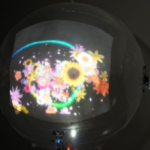ペロブスカイト太陽電池は、その大きな可能性にもかかわらず、熱や湿気などの外部刺激に対する反応が、安定性に大きな影響を与えます。EPFLの研究者たちは、劣化の原因を突き止め、安定性を向上させる技術を開発し、費用対効果が高く効率的なこの太陽電池の普及に近づいた。 Despite their huge potential, the way perovskite solar cells respond to external stimuli – such as heat or moisture – has a considerable impact on their stability. Researchers at EPFL have identified the cause of degradation and developed a technique to improve stability, bringing us closer to widespread adoption of these cost-effective and efficient solar cells.
2023-01-17 スイス連邦工科大学ローザンヌ校(EPFL)

今回、EPFLと韓国の成均館大学の研究者が、PSCの安定性を向上させる方法を発見しました。研究者らは、湿気や熱、光にさらされることで劣化するペロブスカイト薄膜に着目しました。この研究は、Michael Grätzel教授(EPFL)とNam-Gyu Park教授(成均館大学)のグループによって行われ、『Science』誌に掲載されました。
研究者らは、特定の2つの結晶面(結晶の平らな表面を指す用語で、原子の特定の配列によって特徴づけられる)に注目した。この面上の原子の配列は、結晶の安定性や水分や熱などの外部刺激に対する反応などの特性や挙動に影響を与える可能性がある。
研究者らは、ペロブスカイト結晶の(100)ファセットと(111)ファセットに注目した。100)面は、結晶のc軸に垂直な面であり、原子が正方形の格子状に繰り返し配列している。一方、(111)面では原子は三角形の格子状に配置されている。
この研究では、ペロブスカイト薄膜で最も一般的な(100)面は、湿気にさらされるとすぐに不安定な不活性相に移行するため、特に劣化しやすいことがわかった。一方、(111)面はより安定で劣化しにくいことがわかった。
さらに、劣化の原因も特定し、ペロブスカイトと水分子の間の強い結合が、安定相から不安定相への移行を引き起こしていることを突き止めた。この情報をもとに、特殊な配位子を使ってより安定な(111)面を成長させる「ファセット・エンジニアリング」と呼ばれる戦略を開発した。その結果、非常に安定で、湿気や熱に強いペロブスカイト薄膜が得られた。
<関連情報>
- https://actu.epfl.ch/news/improving-perovskite-solar-cell-resistance-to-degr/
- https://www.science.org/doi/10.1126/science.adf3349
安定なペロブスカイト太陽電池のためのファセット依存性劣化の解明とファセットエンジニアリング Unveiling facet-dependent degradation and facet engineering for stable perovskite solar cells
Chunqing Ma ,Felix T. Eickemeyer ,Sun-Ho Lee ,Dong-Ho Kang ,Seok Joon Kwon ,Michael Grätzel ,Nam-Gyu Park
Science 12 Jan 2023
DOI: 10.1126/science.adf3349
Facet-stabilized films
The degradation of formamidinium–based lead iodide perovskite has been shown to depend on which crystal facets are exposed to the surface. C. Ma et al. found that water adhesion was stronger on the (100) facet than on the (111) facet and made these materials more prone to moisture-induced degradation. The authors show how ligand-assisted perovskite film growth could be used create (111)-dominated films with high stability against moisture (up to 85% relative humidity) and thermal stress (85°C) without additional surface passivation. —PDS
Abstract
A myriad of studies and strategies have already been devoted to improving the stability of perovskite films; however, the role of the different perovskite crystal facets in stability is still unknown. Here, we reveal the underlying mechanisms of facet-dependent degradation of formamidinium lead iodide (FAPbI3) films. We show that the (100) facet is substantially more vulnerable to moisture-induced degradation than the (111) facet. With combined experimental and theoretical studies, the degradation mechanisms are revealed; a strong water adhesion following an elongated lead-iodine (Pb-I) bond distance is observed, which leads to a δ-phase transition on the (100) facet. Through engineering, a higher surface fraction of the (111) facet can be achieved, and the (111)-dominated crystalline FAPbI3 films show exceptional stability against moisture. Our findings elucidate unknown facet-dependent degradation mechanisms and kinetics.



